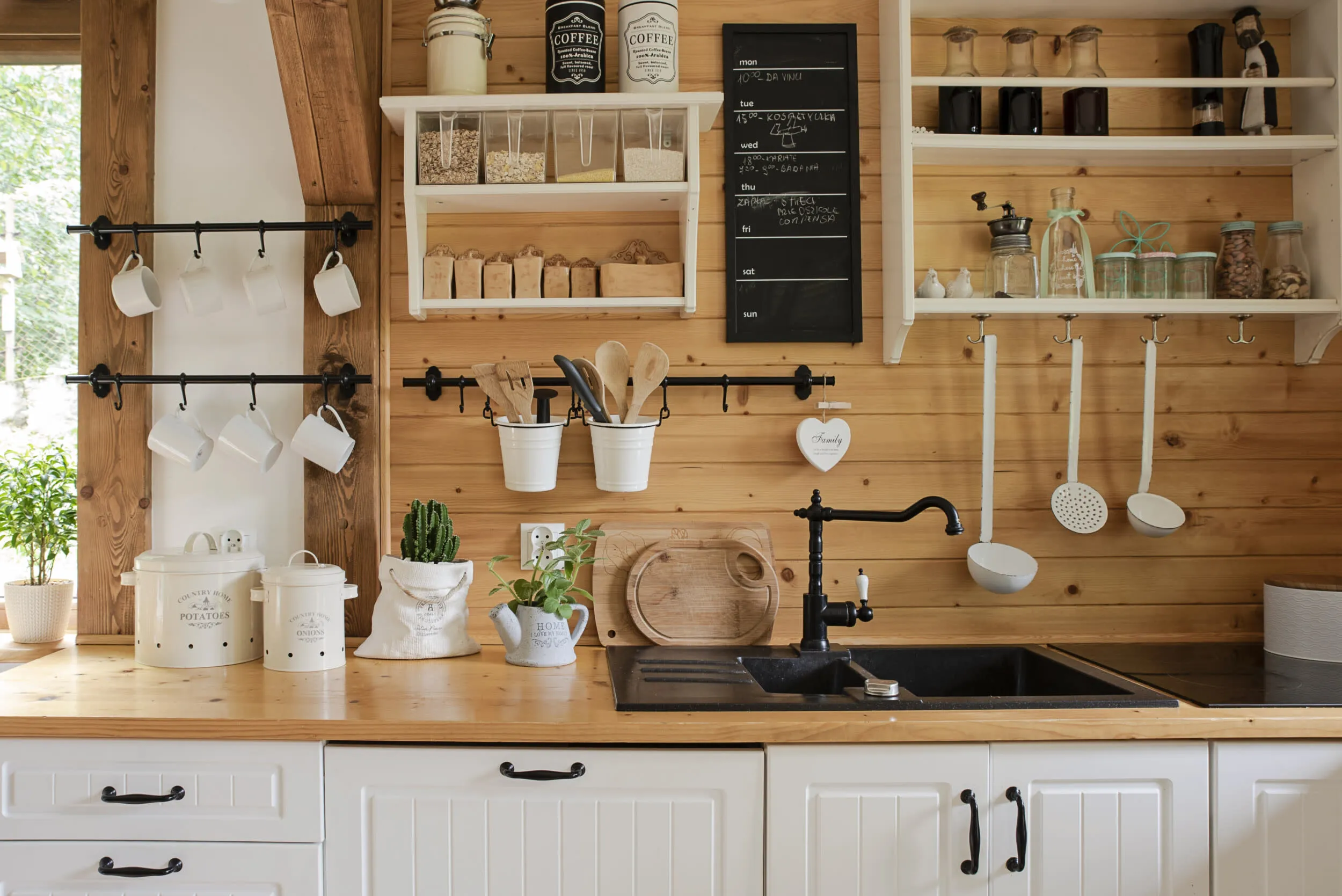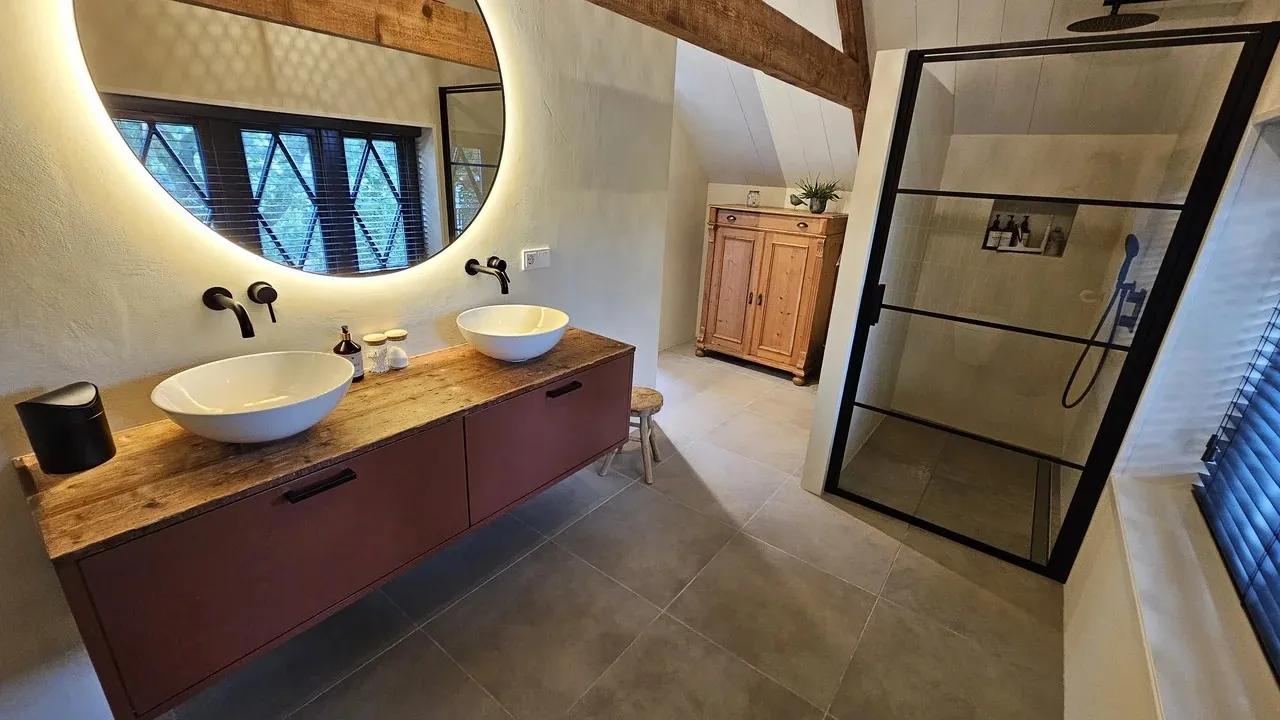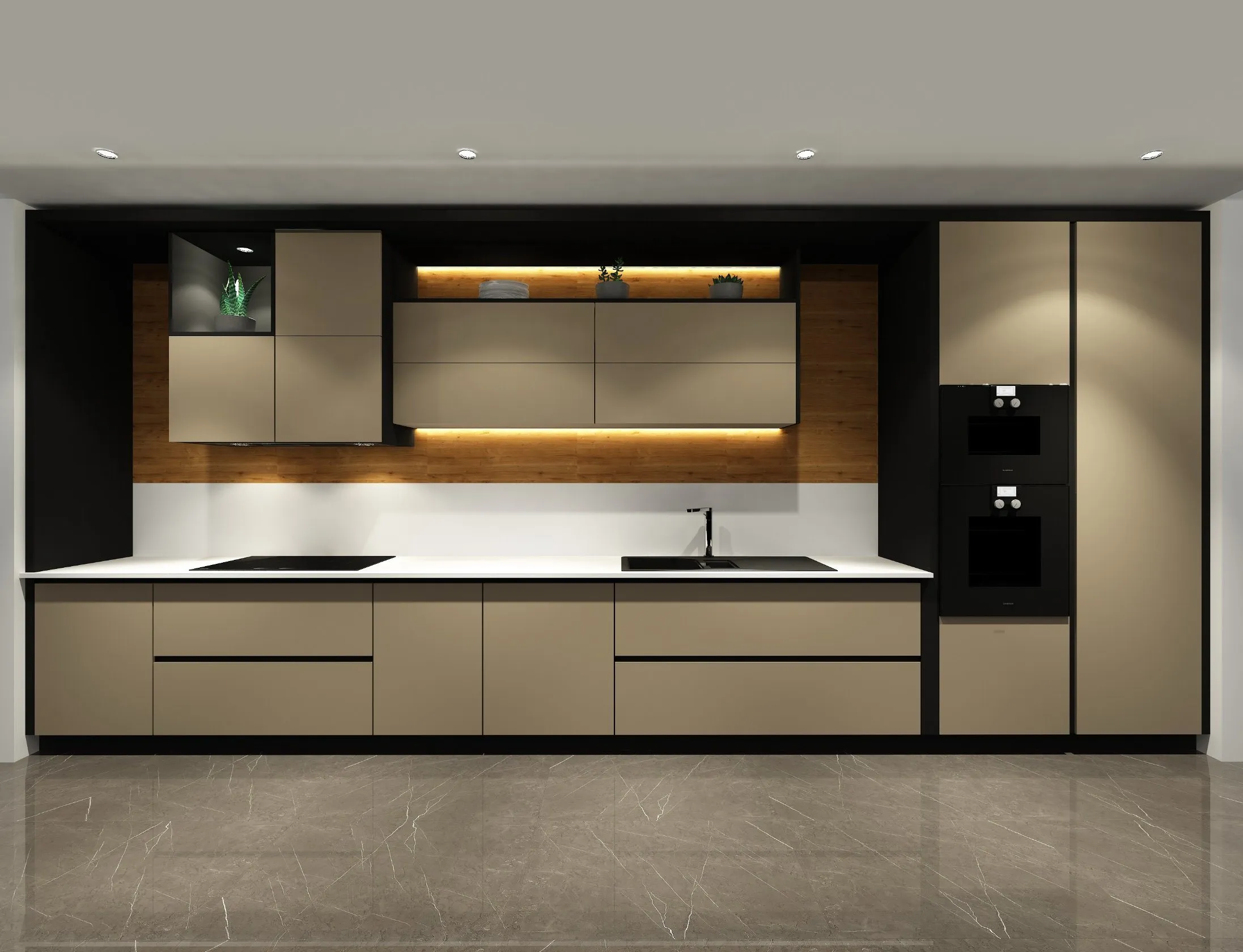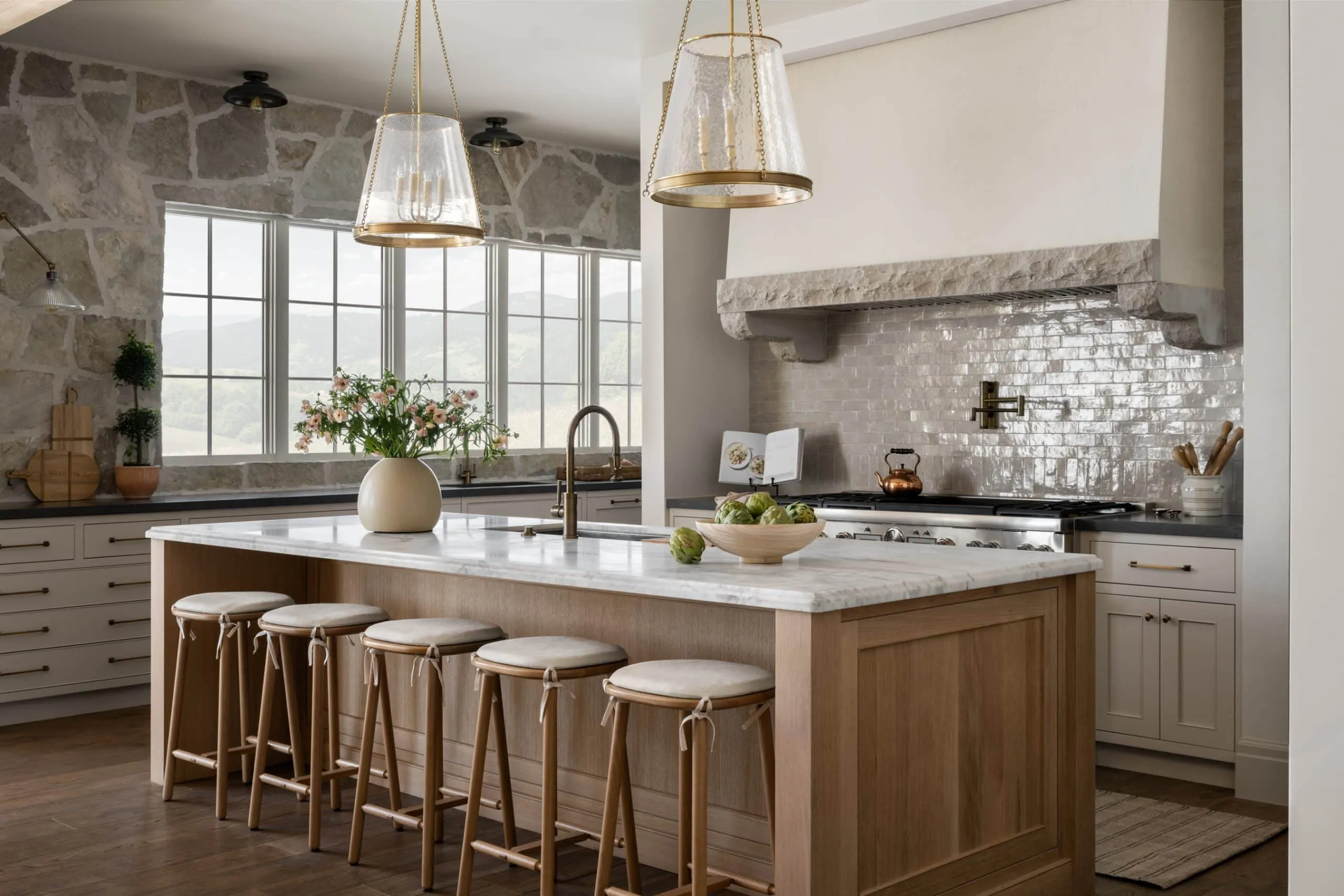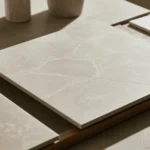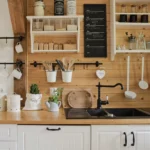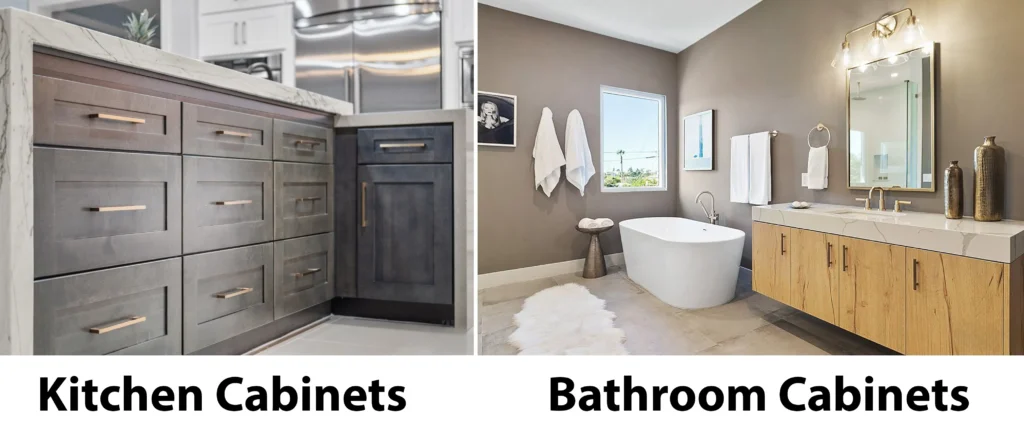
Cabinets look similar on the outside, but the wrong choice can waste money, space, and time. Many homeowners only realize this difference after problems appear.
We provide one-stop building material solutions from Foshan for overseas projects. Our supply covers kitchens, wardrobes, bathrooms, doors, windows, tiles, lights, flooring, and wall panels. We serve homeowners, contractors, designers, developers, and builders. Services include full-house style matching, 3D interior and façade design, export logistics, and after-sales support.
Kitchen and bathroom cabinets differ in size, durability, and use. Kitchens need storage and heat resistance, while bathrooms require moisture protection and compact design. Matching or mixing depends on function and design goals.
Before you decide, let’s walk through every important difference so you can make the right choice.
What are the standard sizes for kitchen and bathroom cabinets?
Kitchen cabinets are usually 24 inches deep and 34.5 inches tall, while bathroom cabinets are 21 inches deep and 31 inches tall. These differences reflect daily use needs.
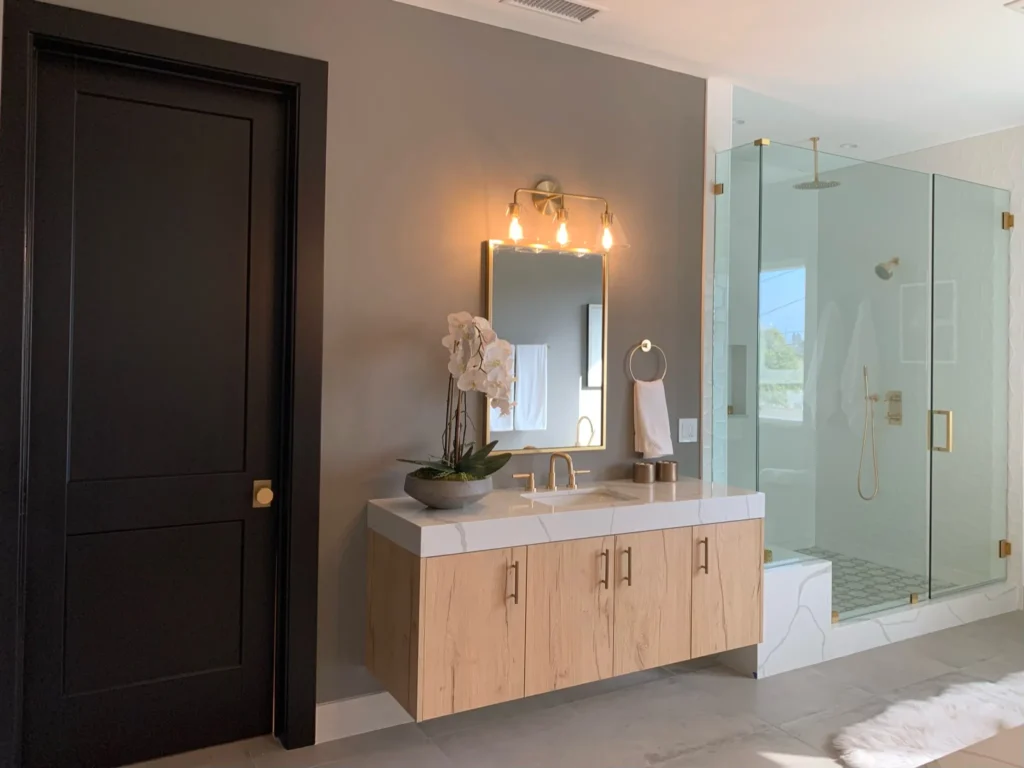
Why dimensions matter
Cabinet dimensions are set by human ergonomics. Kitchen counters are higher to ease food prep. Bathroom vanities are lower to fit sinks and allow comfort while washing.
Common standards table
| Cabinet Type | Depth | Height | Width Range |
| Kitchen Base | 24″ | 34.5″ | 12″–48″ |
| Bathroom Vanity | 21″ | 31″ | 18″–72″ |
Everyday impact
These size differences are not random. A taller kitchen cabinet avoids back strain when chopping food. Lower bathroom vanities make it easier for children and adults alike to use sinks comfortably. Choosing the wrong size can lead to discomfort or wasted space.
Why are bathroom vanities lower than kitchen cabinets?
Bathroom vanities are lower to make sinks easier to use. Kitchen counters are higher to support food preparation and reduce bending while cooking.
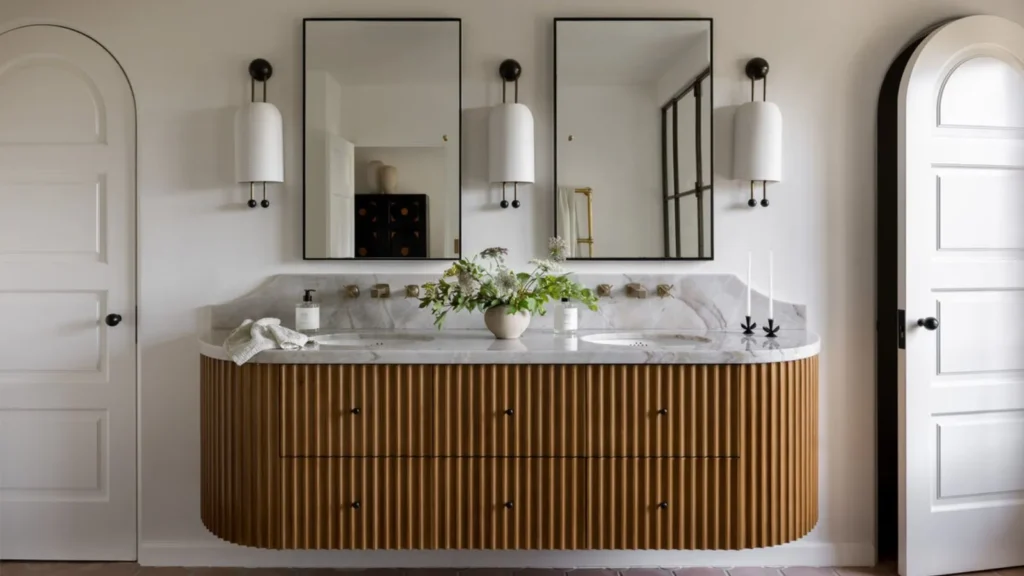
Sink ergonomics
Bathroom vanities need to accommodate sinks. If they were as tall as kitchens, it would feel awkward to bend over a basin. Bathroom cabinets balance storage with sink height.
Kitchen workflow
In contrast, kitchens need counter space for chopping, mixing, and placing appliances. A higher counter keeps posture upright during longer cooking tasks.
Design conclusion
Height is not only about comfort. It directly affects usability and daily experience. Kitchens and bathrooms are designed around different primary tasks, which is why their cabinets differ.
Can you use kitchen cabinets in the bathroom?
Yes, kitchen cabinets can be used in bathrooms, but not recommended. They are not designed for constant humidity, which can cause warping, swelling, or mold issues.

Moisture problem explained
Bathrooms create steam from showers and baths. Materials like particle board absorb water fast and break down. Kitchen cabinets made from MDF or plywood may last longer, but still need sealing.
Cost of mistakes
Homeowners sometimes repurpose kitchen cabinets for bathrooms to save money. But when damage appears, repairs and replacements end up more expensive.
When it works
With proper sealing and ventilation, kitchen cabinets can survive in bathrooms. However, buying cabinets designed for bathrooms is a safer long-term solution.
Do kitchen and bathroom cabinets need to match?
Cabinets do not need to match, but many designers suggest coordination. Matching creates flow in open layouts, while mixing allows more personality in each room.
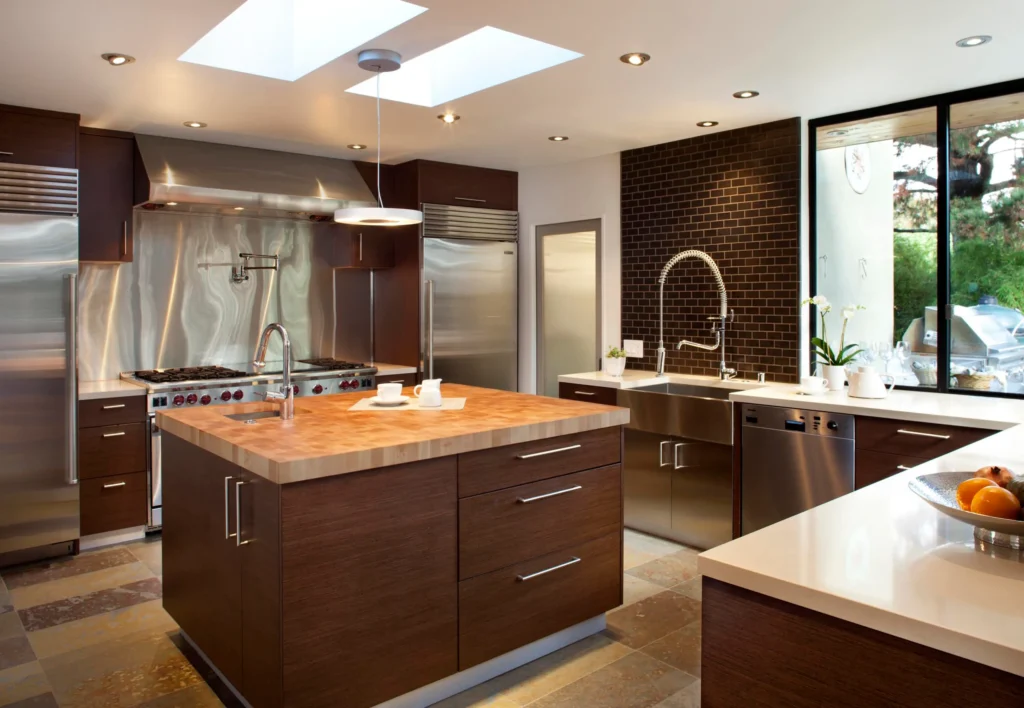
Design options
- Match: unified look, smoother resale value.
- Mix: unique character, reflects room function.
Practical advice
If rooms are close together, matching is safer. If far apart, mixing styles may work without disrupting flow. Many homeowners choose the same door style but vary finishes or countertops.
Which materials work best for bathroom cabinets?
Bathroom cabinets need materials that resist water and humidity. Plywood and sealed MDF are better than particle board, which quickly deteriorates in damp conditions.
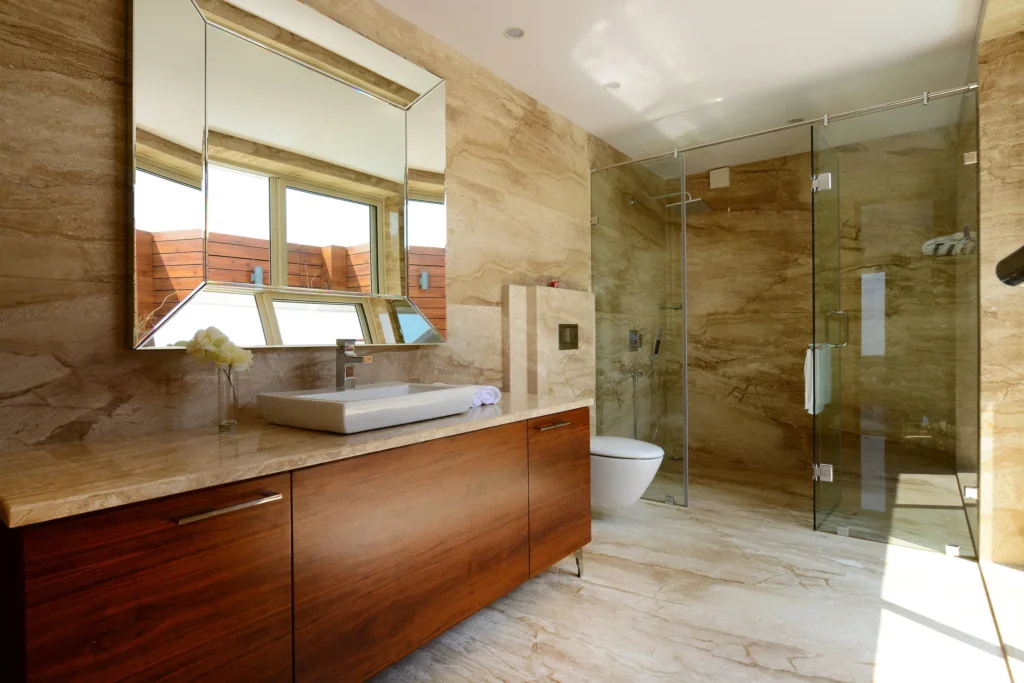
Material comparison
| Material | Moisture Resistance | Lifespan | Best Use |
| Plywood | High | 20+ yrs | Bases near sinks |
| MDF (sealed) | Medium | 10–15 yrs | Painted vanities |
| Particle board | Low | 3–8 yrs | Dry storage only |
Why choice matters
Humidity is the biggest enemy in bathrooms. Choosing durable materials avoids swelling doors, mold, and frequent replacements. Cabinets designed for wet areas extend lifespan and protect investment.
How do kitchen cabinets handle moisture compared to bathroom cabinets?
Kitchen cabinets handle occasional moisture but not constant humidity. Bathroom cabinets are built with better sealing and finishes to handle water daily.
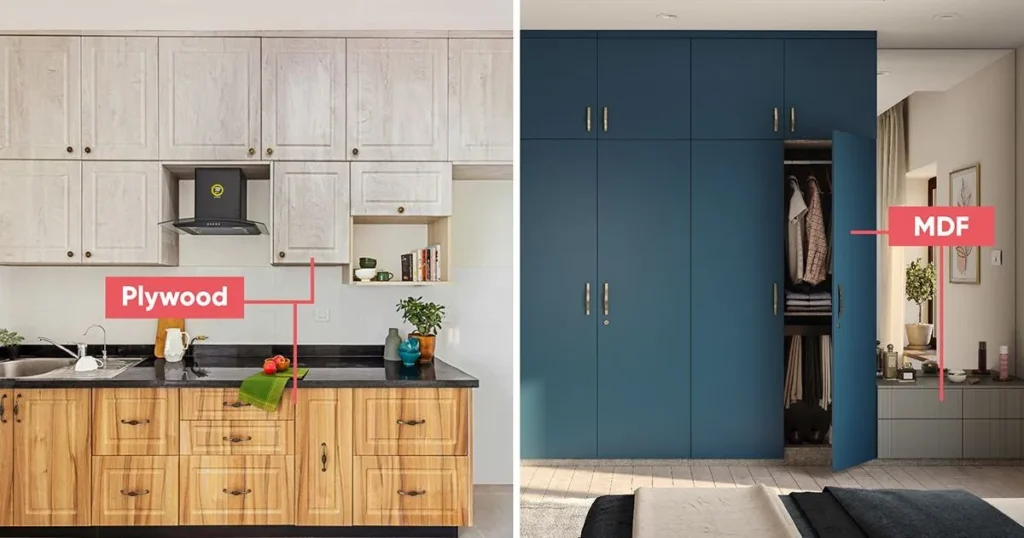
Kitchens and water exposure
Kitchens deal with spills and steam from cooking, but surfaces dry quickly. Good sealing and finishes help. Problems usually appear only under sinks.
Bathrooms and constant humidity
Bathrooms are damp daily. Showers create steam that seeps into unsealed edges. That is why bathroom cabinets need stronger finishes and water-resistant cores.
Are bathroom cabinets less durable than kitchen cabinets?
Bathroom cabinets can be less durable because of constant humidity. Kitchen cabinets often last longer due to drier environments, even if made of similar materials.
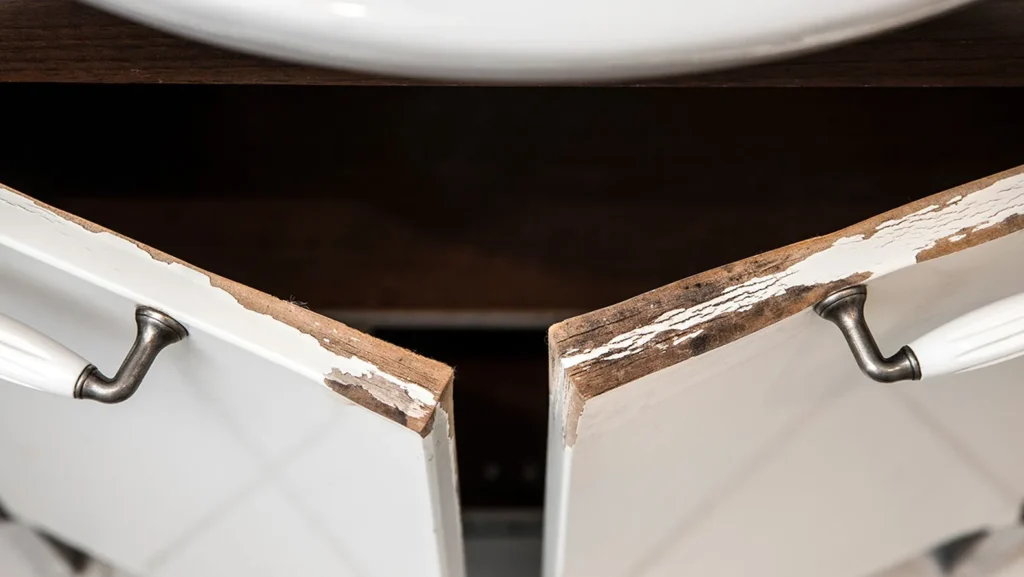
Durability factors
- Moisture exposure
- Weight load differences
- Usage frequency
Kitchen cabinets carry heavy cookware, but stay dry most of the time. Bathroom cabinets store lighter items, but suffer from water exposure daily. This is why materials, not just usage, decide lifespan.
What is the cost difference between kitchen and bathroom cabinets?
Kitchen cabinets cost more because they are larger, need more materials, and carry more load. Bathroom cabinets are smaller and cheaper but require water-resistant finishes.
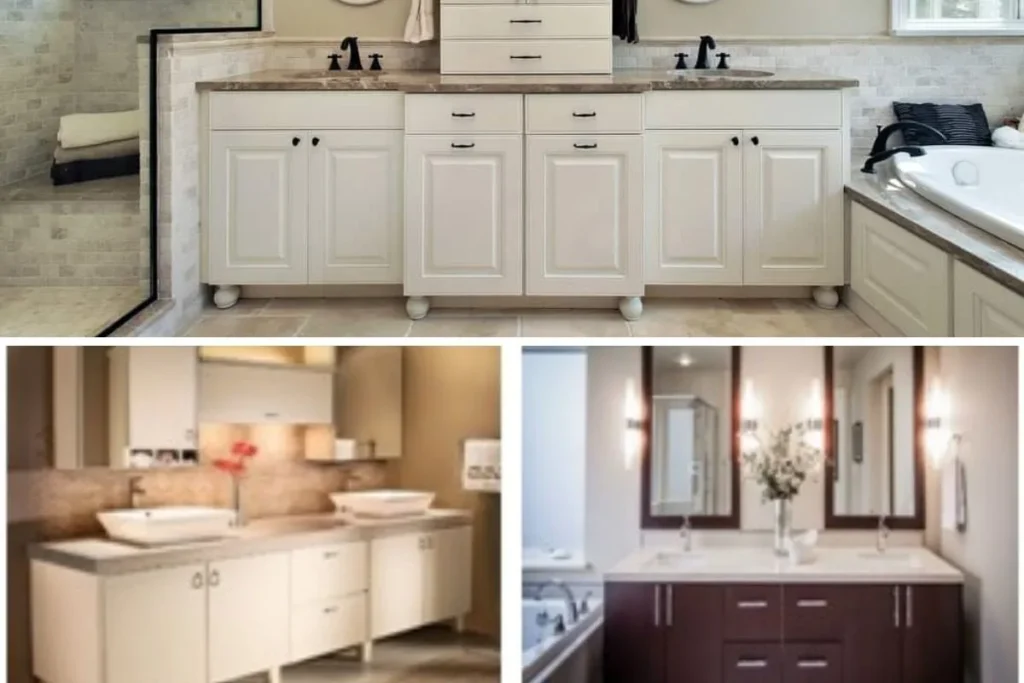
Typical cost range
| Cabinet Type | Average Cost Installed |
| Kitchen Cabinets | $6,000–$12,000+ |
| Bathroom Vanities | $500–$3,000+ |
Bathroom projects cost less overall, but per square foot, high-quality bathroom cabinets can be as expensive as kitchens due to finishes.
Which cabinet style fits both kitchen and bathroom spaces?
Shaker-style cabinets work well in both kitchens and bathrooms. They are simple, versatile, and available in many finishes.
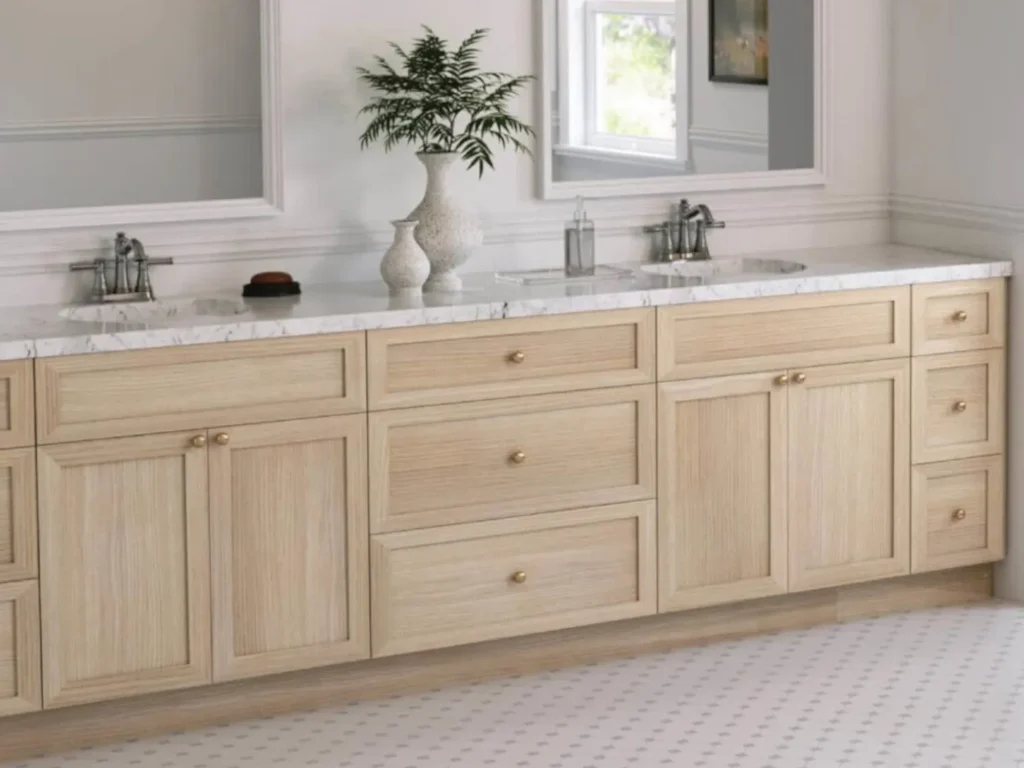
Why shaker works
- Classic and timeless look
- Easy to clean flat panels
- Works with both modern and traditional interiors
Other styles like flat-panel and raised-panel can also adapt, but shaker remains the most universal.
How do designers recommend coordinating kitchen and bathroom cabinets?
Designers suggest choosing one unifying element, such as door style, finish, or hardware. This creates balance without forcing identical looks.
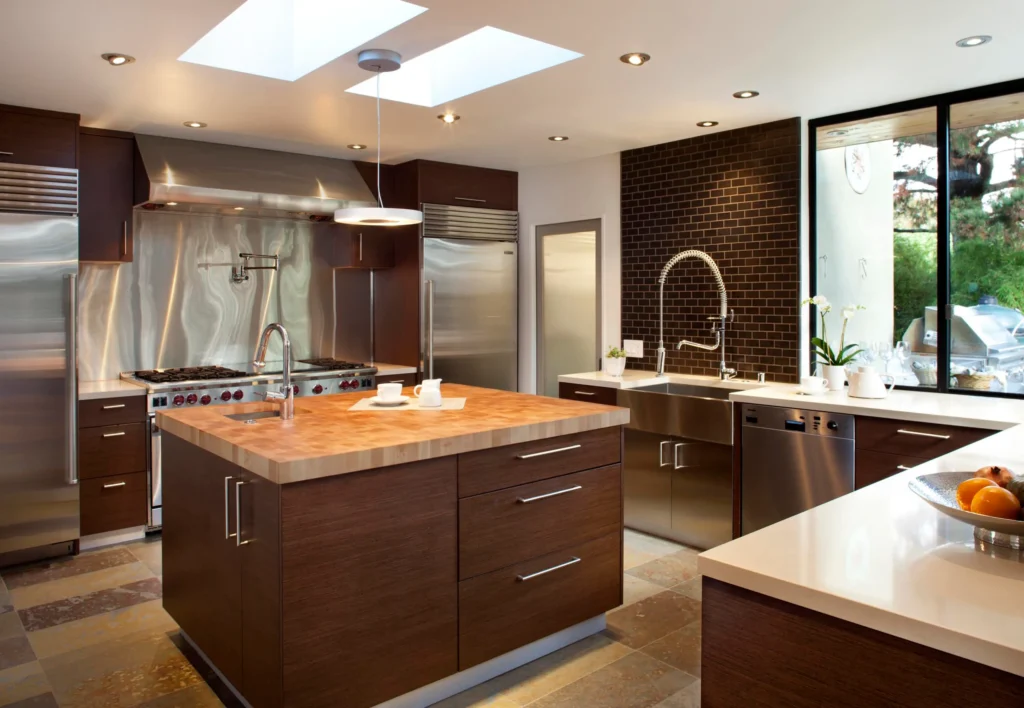
Expert advice
If resale value matters, keep cabinets similar. If personal style matters more, use bathrooms for creative finishes. Hardware can bridge styles, creating subtle links between rooms.
Conclusion
Kitchen and bathroom cabinets look similar but differ in size, materials, and function. Choosing wisely prevents damage and improves daily use.
Final CTA
If you have a project coming up, share your floor plan with us. We can prepare a tailored proposal with the right cabinet choices for both kitchen and bathroom. Want to begin? Just send us the plan.
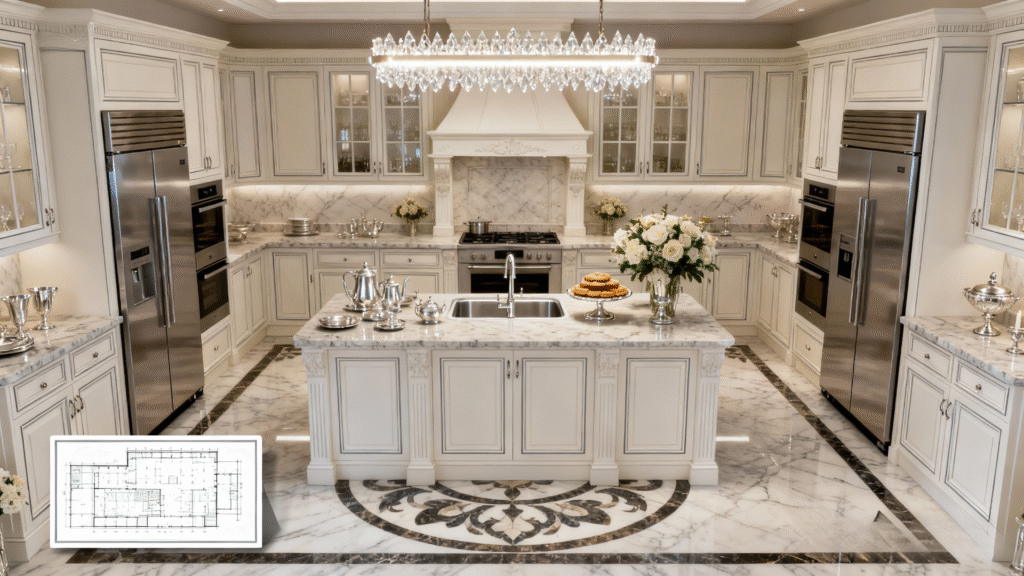
FAQs
Why are bathroom cabinets usually shallower than kitchen cabinets?
They are shallower to save space and fit small rooms. The reduced depth also makes sinks easier to reach.
Can bathroom cabinets be taller than kitchen cabinets?
Yes, custom vanities can be taller, but standard bathroom cabinets stay lower for ergonomic sink use.
Do kitchen cabinets last longer than bathroom cabinets?
Usually yes, because kitchens are drier. Bathrooms expose cabinets to steam and water daily.
What countertop materials work best for bathroom cabinets?
Quartz and solid surface are best. They resist water, mold, and stains better than laminate.
Can I repaint bathroom cabinets to extend lifespan?
Yes, repainting with water-resistant paint can protect cabinets and refresh their look affordably.
Is solid wood good for bathroom cabinets?
Solid wood can warp in humidity. Sealed plywood or MDF often perform better in wet conditions.
Do matching cabinets increase home value?
Yes, buyers often prefer consistent style across rooms. Matching cabinets may improve resale appeal.
What is the best budget option for bathroom cabinets?
Prefabricated vanities made from MDF or particle board are the cheapest, but they last fewer years.

